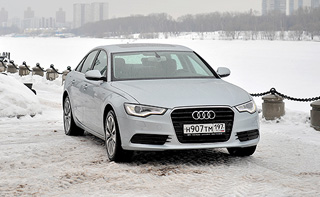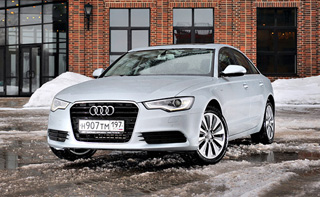Audi A6 test drive since 2011 sedan
Between two axes
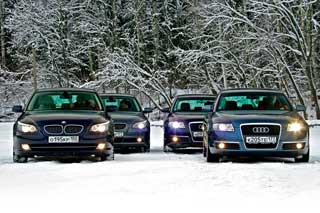 How confidently and quickly you can drive on winter roads on cars with front, rear and all -wheel drive, studied Sergey Voskresensky and Anatoly Fomin. Photo: Alexander Kulnev.
How confidently and quickly you can drive on winter roads on cars with front, rear and all -wheel drive, studied Sergey Voskresensky and Anatoly Fomin. Photo: Alexander Kulnev. It seems that the topic has been studied along and across, everyone already knows: on a slippery road, the front -wheel drive is more reliable than the rear, and the complete panacea is completely from many troubles. Nevertheless, the snow will barely lie, we again start the debate about controllability, we argue whether all -wheel drive is really needed, how reliable the electronic assistants are. Indeed, in addition to technical tricks, there is a human factor - the driver’s qualification level, the habit of a particular car.
Club four
Audi and BMW: both Bavarian firms have succeeded in creating all -wheel drive machines, while on most models they adhere, as you know, opposite schemes: typical audi - front -wheel drive, classic BMW
- With the drive to the rear wheels. Refined from stereotypes, personal sympathies and antipathies. We will not say that, for example, BMW is more sporty, and Audi is trying to be right in everything. Believe me, if the engineers made these cars like that, then they wanted to emphasize these properties. No one prevented the specialists from Ingolstadt to make A6 stricter, and the Munich, on the contrary, turn the clot of energy into a psychological unloading room on wheels.
So, in the row built Audi-A6 and A6 CVATRO, BMW-530i and 530 XI. Let's see how convenient it is to control them in a particular situation.
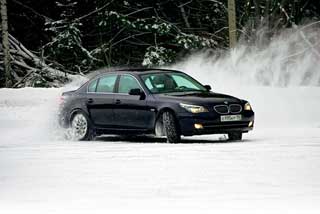 The rear and front?
The rear and front? An attempt to briskly start on the snow-clogging dynamometric road of the landfill ends with the collapse and unflattering epithets addressed to the BMW-530. No, we are silently gaining move. The machine in Sports Boyko is sorting through the programs - it seems that now the voice of a 3 -liter beast will triumphantly sound. But no! Frightened, the dynamic along with the Trekshn control - DTC suddenly fell on the car with all their might, imprinting it to the ground. This is an already unreasonable BMW, and a kind of amorphous vehicle.
Approximately the same sensations on the track laid to evaluate controllability. It is worth the driver to work as a steering wheel or gas, BMW almost stops. Your qualifications are no longer important here, the highest skill under such control is a smooth, cautious ride without slipping.
What the creators of BMW fought with is obviously, it is worth clicking for 2-3 seconds to press the toggle switch with the DTC symbol. A yellow triangle broke out on the panel, and the 530th turned into an indomitable creature that strives to bury the gas. At first it’s even scary. If you feel the rhythm of these movements correctly, the machine becomes more obedient. Naturally, there are no miracles, it is still very capricious in management. But how great it is to draw intricate patterns in the snow! Such a BMW leaves a lot of impressions in the soul, although the practical use of all the capabilities of the car is very doubtful in winter.
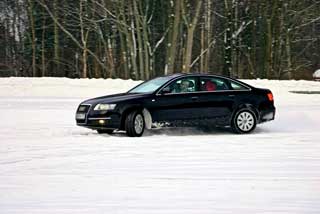 In the front-wheel drive Audi A6, almost everything is different. In a spacious, wide chair you sit differently, half -heartedly hold on to the steering wheel almost weightless at low speeds. At first, Audi liberates, completely knocking out of the head of thought about a strict dosage of movements by steering and gas. In the management of Audi, it is noticeably easier than the rear-wheel drive BMW, and the active security systems are differently configured. Even when ESP turned on, the front wheels can be axle for quite some time, and the machine can slide within a reasonable one. The main thing is not to get carried away! Moreover, during acceleration, a 7-speed variator is even too active for the winter road. All the time he seeks to bring the engine to maximum power, but he, of course, noisily indignant in the intervention of ESP. With disconnected electronics, acceleration is more stable.
In the front-wheel drive Audi A6, almost everything is different. In a spacious, wide chair you sit differently, half -heartedly hold on to the steering wheel almost weightless at low speeds. At first, Audi liberates, completely knocking out of the head of thought about a strict dosage of movements by steering and gas. In the management of Audi, it is noticeably easier than the rear-wheel drive BMW, and the active security systems are differently configured. Even when ESP turned on, the front wheels can be axle for quite some time, and the machine can slide within a reasonable one. The main thing is not to get carried away! Moreover, during acceleration, a 7-speed variator is even too active for the winter road. All the time he seeks to bring the engine to maximum power, but he, of course, noisily indignant in the intervention of ESP. With disconnected electronics, acceleration is more stable. On a closed highway, the front -wheel drive almost equalizes drivers of different qualifications, as if emphasizing the simplicity and naturalness of their actions. The disconnection of electronic insurance, of course, affects the final numbers: more slipping, the angles of rotation of the steering wheel increases, especially in the medium -sized driver. We unanimously admit: riding on the front drive is boring, but safer and faster.
Full forward
As you know, Audi-A6 Kvattro and BMW with index X are equipped with a drive for all wheels. But the designs are very different. Audi is rather a classic of the genre: all -wheel drive is supplemented by an interdosseous differential of increased friction by torsen with the distribution of torque 40:60 between the front and the rear axles. In ordinary life, BMW is the rear -wheel drive car, in which the anterior axis connects, if necessary, electronics that controls the multi -disable coupling.
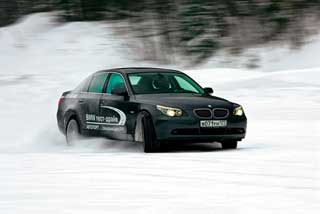 It is very impressive when, along the ice-polished ice, the audi accelerates to 100 km/h in 14-15 seconds. Everything has been so simplified that there is no need to handle gas jewelry, experiment with electronics. Just put on the gas - and rush forward with a whirlwind! True, do not forget: the all -wheel drive Audi did not slow down better. On ice with 100 km/h - almost 150 m! In addition, in comparison with the front -wheel drive machine, you work much more actively by the steering wheel, because the course vibrations of the rear axle have appeared. Nevertheless, it seems that the additional leading axis has changed some laws of physics, endowing the audi with amazing stability.
It is very impressive when, along the ice-polished ice, the audi accelerates to 100 km/h in 14-15 seconds. Everything has been so simplified that there is no need to handle gas jewelry, experiment with electronics. Just put on the gas - and rush forward with a whirlwind! True, do not forget: the all -wheel drive Audi did not slow down better. On ice with 100 km/h - almost 150 m! In addition, in comparison with the front -wheel drive machine, you work much more actively by the steering wheel, because the course vibrations of the rear axle have appeared. Nevertheless, it seems that the additional leading axis has changed some laws of physics, endowing the audi with amazing stability. All this is so, but only partly - until you remain within the usual speeds. A person, as you know, always strives for more, so if the machine allows, it infuriates the pace, at first not paying attention that the management techniques are needed slightly different. Audi with speed growth gradually expands the corridor of movement. At first you notice that the car suddenly plunged into thought at the entrance to the turn and on the front-wheel drive glides
rright axis, not paying attention to your commands. Then, as if recollecting, he corrects the error, making up with the rear wheels, but again hangs in sliding. In general, ESP copes well with its duties, pulling a fast rider in time.
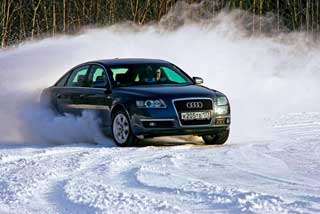 Turn off the electronics. In the greenhouse conditions of the closed route to the sweeping, ambiguous behavior of all -wheel drive, the experienced driver quickly adapts. True, it complains at the duration of lateral slides, the predominance of front-wheel drive reactions at the entrance to fast turns and the rear-wheel drive at the exit of them. But, in general, in the hands of a professional, the car behaves stably. An inexperienced driver can steam, unexpectedly realizing that here, with all the leading ones, it is necessary to work jewelry with the steering wheel and gas. Otherwise, the car scares and forgives much less errors than a more familiar drive - front.
Turn off the electronics. In the greenhouse conditions of the closed route to the sweeping, ambiguous behavior of all -wheel drive, the experienced driver quickly adapts. True, it complains at the duration of lateral slides, the predominance of front-wheel drive reactions at the entrance to fast turns and the rear-wheel drive at the exit of them. But, in general, in the hands of a professional, the car behaves stably. An inexperienced driver can steam, unexpectedly realizing that here, with all the leading ones, it is necessary to work jewelry with the steering wheel and gas. Otherwise, the car scares and forgives much less errors than a more familiar drive - front. Spectacular acceleration on the direct and almost complete absence of BMW steering - a consequence of other steering settings, and the concept of all -wheel drive as a whole. What was so lacking on the winter road to the usual 530th, here even in abundance. Under the triumphant jean of the motor, supported by a slightly arrogant, but, without a doubt, competent work of all -wheel drive, BMW shows a wonderful result. Audi-A6 Croatro behavior looks no longer so verified and balanced.
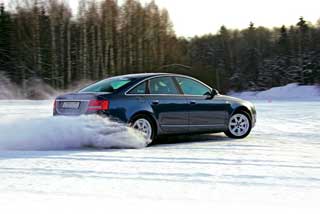 A colleague assigned to the role of an ordinary driver rubs his hands: he likes a bright, expressive ride on an all -wheel drive BMW. The car appears very understandable and predicted, as if specially created for driving along the winter training ground. Of course, here DTC is a little reinsured, without hesitation, cooling hot heads. But, by turning off the electronics, you will be able to quickly master a spectacular ride, for example, around a circle or in a targeted and well -visible turn. Even in lateral sliding, the car is almost impeccably as a given radius, sensitively reacting to the correction of the steering wheel and gas.
A colleague assigned to the role of an ordinary driver rubs his hands: he likes a bright, expressive ride on an all -wheel drive BMW. The car appears very understandable and predicted, as if specially created for driving along the winter training ground. Of course, here DTC is a little reinsured, without hesitation, cooling hot heads. But, by turning off the electronics, you will be able to quickly master a spectacular ride, for example, around a circle or in a targeted and well -visible turn. Even in lateral sliding, the car is almost impeccably as a given radius, sensitively reacting to the correction of the steering wheel and gas. When from greenhouse conditions you fall into real life situations, the X is not so perfect. BMW responds to each sharp movement with a drift in the rear axle. And if on a special highway this is good, then on an ordinary winter road, such redundancy complicates control. In a word, and BMW, within the limits of the driver's capabilities, becomes very difficult to manage. He, perhaps, is more interesting, more assured Audi, but also not always unequivocal, and it forgives even less mistakes.
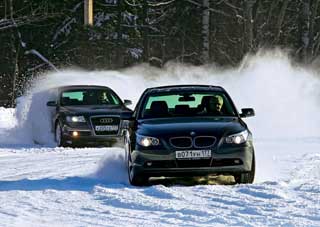 Drive truths
Drive truths The rear-wheel drive on a slippery road, especially on such a powerful and impulsive car as the BMW-530, requires a very well-played ensemble of the car, the driver and insured electronics. Sometimes everyone seeks to highlight their self, and as a result - a story about swan, cancer and pike.
The front -wheel drive may be boring for lovers of emotional driving, but perfectly balanced, simple and understandable in management.
At times, Audi-A6 Croatro would like to criticize for not very expressive handling. But this, first of all, is a large car with good accelerated dynamics, solid and convenient. It has everything that most buyers count on.
BMW-530 XI has a bright and ambitious character. Clutching plenty on special tracks, you appreciate the specific settings of all -wheel drive. But there are doubts: the car is too sports for the business class, and is large for sports and oversaturated with electronics.
BMW-530 XI
In everyday life, the car is rear -wheel drive. Feeling a slippage of the wheels, multi -disc
the coupling controlled by electronics connects the front wheels, in some cases, transmitting to them to 100% torque.
«
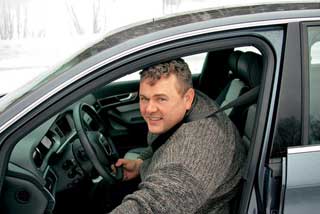 Audi-A6 croatro
Audi-A6 croatro Classic all -wheel drive with an interdose differential of increased friction of torsen and asymmetric
(40 by 60 %) distribution of torque between the front and rear axles.
Our recommendations
Undoubtedly, all -wheel drive versions are attractive for slush and winter. However, each machine has its own character, which will have to adapt. You can, however, once and for all write yourself to the right drivers, putting part of the responsibility on electronics. You are guaranteed reliable movement in space, confident victories in the traffic light of the championship, especially on slippery roads.
Full -wheel drive makes winter ride safer and more reliable. But inexperienced drivers are better not to abuse speed. Truly quickly and safely, only trained will go. But the main thing: the differences between the front and all-wheel drive machines in controllability, the reliability of behavior on the winter road is incomparably less than between the rear-wheel drive and the front. And the rear with full is even difficult to compare. And no active security systems are able to fully compensate for this. At least for now
Anatoly Fomin, Sergey Voskresensky
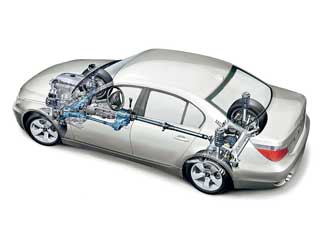
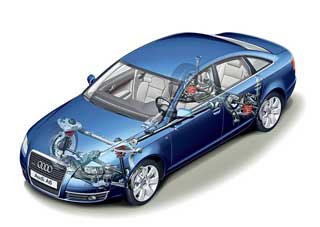
Source: The magazine "Driving"











